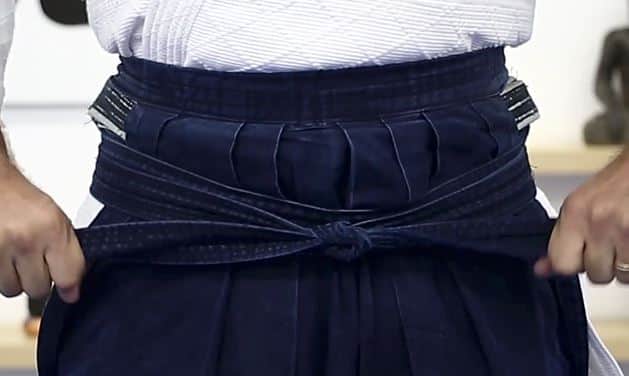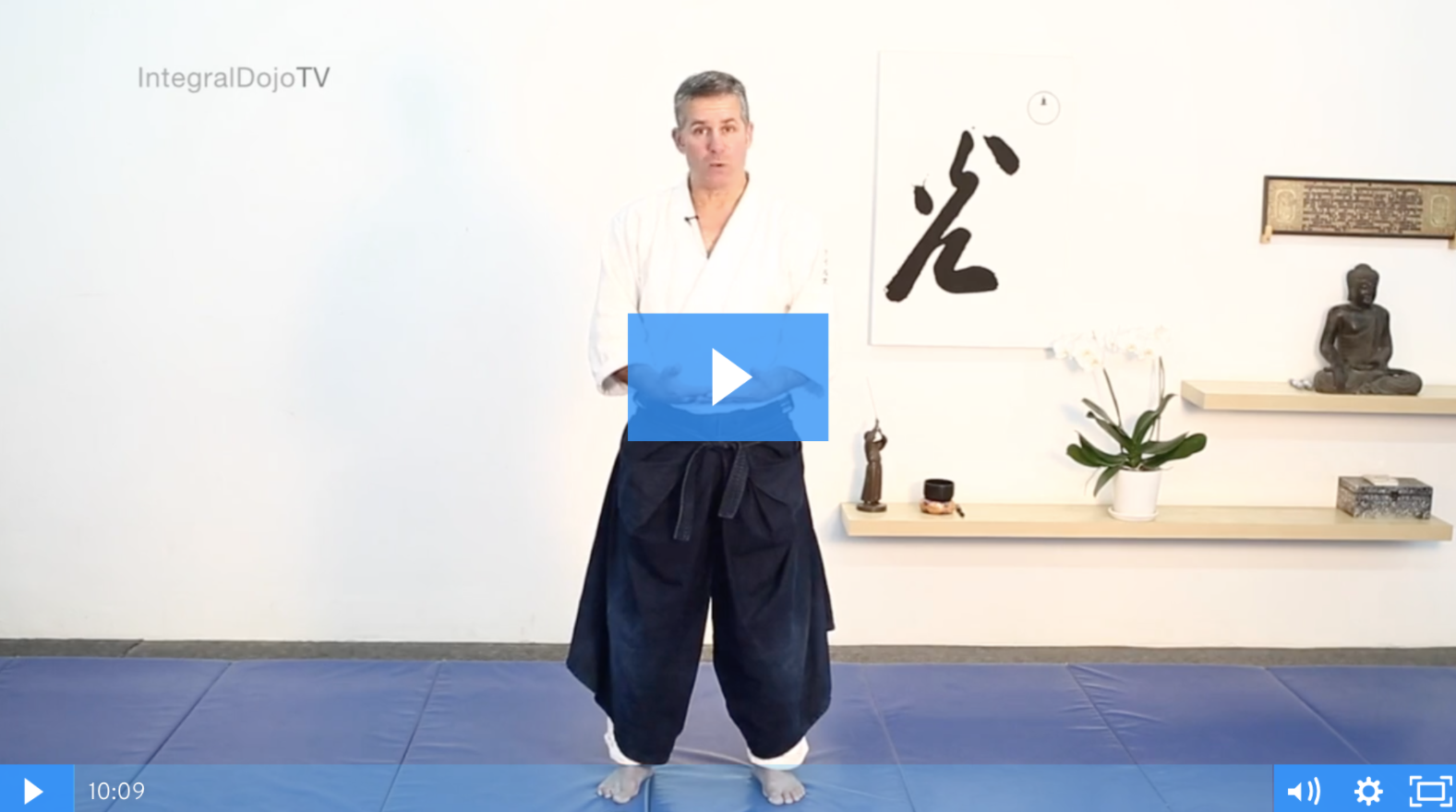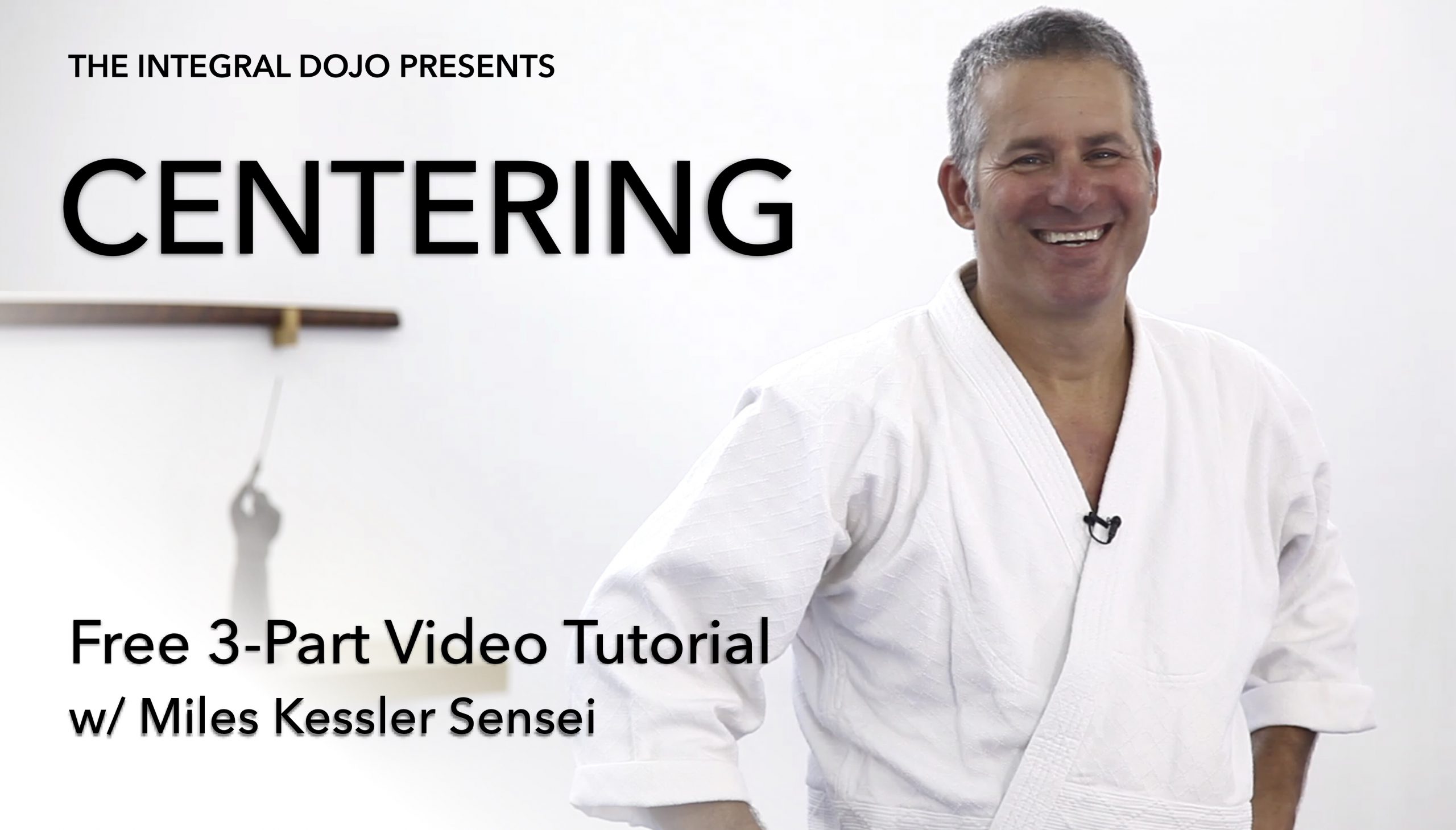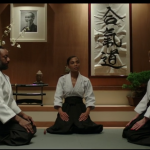Centering is the core transformational practice of Aikido. It is the foundational principle in Aikido, upon which all other principles rest. Not only is centering a linchpin practice of the art, it is also the principle that when developed will have the biggest impact on your life. The below post will help you establish your center deeper in both your Aikido and your life. Let’s look at 10 Ways Centering In Aikido Helps You Grow.

This blog post is a continuation of my series of posts on “Aikido & The Evolution Of Response.” Each of the previous posts has been following your evolutionary potential with “Aikido & The Survival Instinct”, “Aikido & The Practice Of Delayed Gratification”, & “Aikido & The Power Of Choice.”
I’m continuing the series by re-publishing a post from our archives that was published 2 years ago.
Let’s look at 10 ways that the practice of “centering” in Aikido helps you to embody growth and development in Self, with Others, and In the World. This is not a definite list, but this short list can be applied directly to your Aikido practice and in your life.
1. Embodying Mindfulness Triggers Growth
The spiritual teacher Gurdjieff said, “Life is real only then, when “I Am”.”
This statement reflects the psychological truth that higher human development only happens when you are authentically present in the here and now with total Mindfulness. In short, mindfulness automatically triggers your developmental process to unfold.
If mindfulness is the core practice for being present in the mind, then the core practice for being present in the body is Centering.
When you practice Centering, you are tuning into what is happening in your body and the space around you. This gives you a greater capacity to show up fully in the body, and in turn, expresses yourself authentically in the world.
2. Containing Intense Experiences
From time to time life can bring you intense internal or external experiences. If the intensity is too much to contain, you will become overwhelmed and “lose center.” Overwhelm takes you up and out of your center. And if it is in a stressful of conflict situation then you’ll automatically go into your reactive survival instinct of fight, flight, or freeze.
By developing your capacity to stay centered you gradually create the space to contain and stay with intense experiences, and especially fear. Your fight, flight, and freeze reactions may get triggered, but because of your increased capacity to contain them you won’t speak or act from these reactive drives.
This increased capacity will help you to better stay with intense experiences and give you greater skill in coping with and handling the challenges that arise in your life.
3. Shifting Back Into Center
In your Aikido training, you are constantly focusing on the practice of shifting back into Center. Even though center sounds like a fixed point, the fact is that as a living human being your body/mind exists in constant flux and flow. This flux and flow of life includes your center.
To be Centered is to be in a temporary state of alignment of body, mind, emotions and spirit. But as all states are temporary – slipping out of this alignment is inevitable.
So in a sense, the practice of centering isn’t so much about being fixed in your center, rather it’s about your capacity to return to your center when you slip out of it.
The developmental process in centering increases your awareness of this temporary state. This awareness will help you know when you inevitably shift out of your center, to accept this temporary imbalance, and to then make the necessary adjustments in your mind and body to shift back into your center.
4. Better Know Your Triggers
Any experience can be a “trigger” that causes you to lose your center. A perceived threatening object or experience can take you out of your center by moving away in fear. A perceived pleasant object or experience can take you out of center by moving towards the object with desire. Or a perceived neutral object or experience can cause you to lose interest or space out and disconnect from your center.
The bad news is that like everybody else, you are hard-wired with these triggers. Some of this hard-wiring is biological, some of it is acquired through life. We are all walking triggers with buttons waiting to be pushed. The good news is that you can change this with the practice of centering.
When you practice centering, you gradually develop the ability to see the cause and effect relationship you have with the world. When you are centered, your power of self-observation gradually increases and you begin to identify the objects, people, experiences, and circumstances that trigger you in life.
Overcoming and transforming your triggers takes practice and time. You will eventually come to the point when you fully understand the causes of your triggers. With this understanding, your triggers will lose their power to take you out of your center.
Get your FREE 3 part “Centering Tutorial” and create the foundation for development in your Aikido and in your life!
CLICK BELOW!
5. Rewire The Self
Losing your center is simply a bad habit that has been conditioned over your lifetime. This bad habit has been conditioned by stress, desires, fears and survival mechanisms.
Although having sharp survival mechanisms can be a valuable asset, the fact is that today, most of the stress you face in life isn’t a real survival situation and does not pose any real threat to your life.
But because you are biologically hard-wired to survive, fear-based reactions often arise when you perceive threats that aren’t actually threats. With practice, you can re-wire these bad habits through mindfulness and the practice of centering.
When you practice centering, you gradually transform your fear-based survival reactions into conscious responses of choice. As the saying out of neuroscience goes “Neurons that fire together, wire together.” Every time you consciously practice centering Aikido, you are rewiring your nervous system. Then, “being centered” gradually move from being a temporary state into becoming more of a permanent trait.
6. Channel The Energy Down
Stress, intense desire, worries, and fear, will cause your energy move up, out, and away from your center. Every time you practice centering, you do the opposite. You shift your attention in and downward. This shifting of attention creates a “center-positive” flow of descending energy that moves through your center to the ground. This descending energy will anchor you in the present moment and helps you rest in clarity and calmness.
7. Maintaining Center When Boundaries Are Disturbed
Your “self-boundaries” are made up of your body, culture, beliefs, history, politics, possessions, family, relationships, and so on. These boundaries contain your identity and the sense of who you are. Any time these boundaries bump into other boundaries out there in the world, your sense of self will be disturbed.
Nothing takes you out of your center more than your boundaries getting disturbed or stressed. “Taking a hit” to your boundaries can throw you out of balance in ways that can take a long time to recover.
When you develop your Center, you increase your capacity to withstand the inevitable disturbances of your boundaries that life presents. Furthermore, you gain inner-resiliency; when you do get knocked out of balance, you will have more acceptance, which is the beginning of the re-aligning process returning to balance in your Center.
Finally, and perhaps most importantly, deeply resting in your Center allows you the space to relax your boundaries and your identity embedded within those boundaries. So when the inevitable “hits” come, you are less affected – you have developed greater emotional agility for navigating the challenges of life.
8. Stay Centered In The Midst Of Action
Staying centered throughout all actions is a fundamental aspect of Aikido practice. In fact, all other principles rest upon the principle of centering. So you need to look at how you move from your center, with your center, and to your center.
When you move from your center you ensure that your actions are an expression of your intention. When you move with your center it allows you to make any micro-adjustments, pivots, or necessary course changes in the middle of an action.
And when you move into your center your actions have a sense completion. It allows you to come full circle, and rest right where you began.
Acting from your center, with your center, and into your center, you will stay centered in the midst of all your actions.
9. Creating A “Relational Ground”
To be centered is to be autonomous, which means to be “self-ruled.” When you are self-ruled you are not ruled by others, or by external circumstances.
In relationships, autonomy means that you are not dependent on another, nor are you independent and in opposition from another. And of course, it also means that you are not co-dependent with others.
When you are centered and autonomous you don’t control and dominate others, nor can they control and dominate you. You are free to be yourself, and you are free to be with others as you choose. And most importantly, you are available to blend and merge (“awase”) with others.
In this sense, centering is the foundation of all relational skills. It is the core principle in Aikido upon which all the relational principles rest. From center you move into connection, listening, leading, blending, entering, receiving, allowing, extending, joining, and so on.
Creating a relational ground through centering, in turn, creates the relational space for fruitful interaction. Creating a relational ground through centering is the source of all creative solutions that lead to the resolution of conflict.
10. Moment To Moment Choice
Anytime you are confronted with a perceived threat your basic survival instincts will trigger reactions. All reactions are nothing more than a repetition of the past.
When you interact with reactions, you are run on automatic pilot and have no freedom of choice at that moment. Because your unconscious conditioned reactions are repetitions of the past, they will never meet the needs of the present in a way that is free, appropriate and functional.
Being in your center allows you to relax into the moment. You become a “tabula rasa,” a clean slate which gives you a greater clarity to see and assess any given situation. When you are in your center you have an increased adaptability to arising situations. You also gain an emotional agility that allows you the freedom to choose how to relate to others in a fresh way in each new moment.
Your only true power is in your ability to choose how to be in the world. The practice of centering puts you squarely in that power as you rest awake and clear in the space of moment to moment choice.
Centering Is Simple
Practicing these 10 ways of centering from Aikido will help you grow as a human being. They will also help you develop a highly complex understanding of center. But as complex as these practices may be, the practice of centering is really a very simple thing…
Just feel the center.
When you simply feel the center, you are practicing the center. And by doing this very simple practice of feeling your center you are automatically practicing all of the above.
Question: In what ways does Centering in Aikido (or in life) help you grow? You can leave a comment by clicking here.
Get your FREE 3 part “Centering Tutorial” and create the foundation for development in your Aikido and in your life!








Please note: I reserve the right to delete comments that are offensive or off-topic.